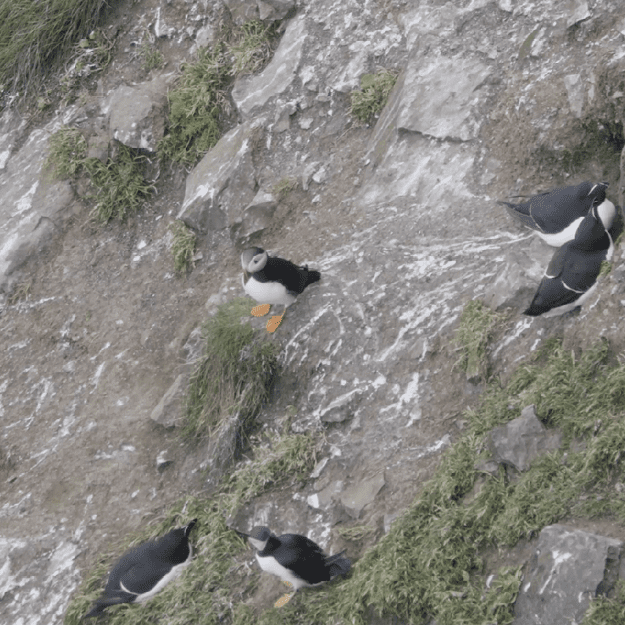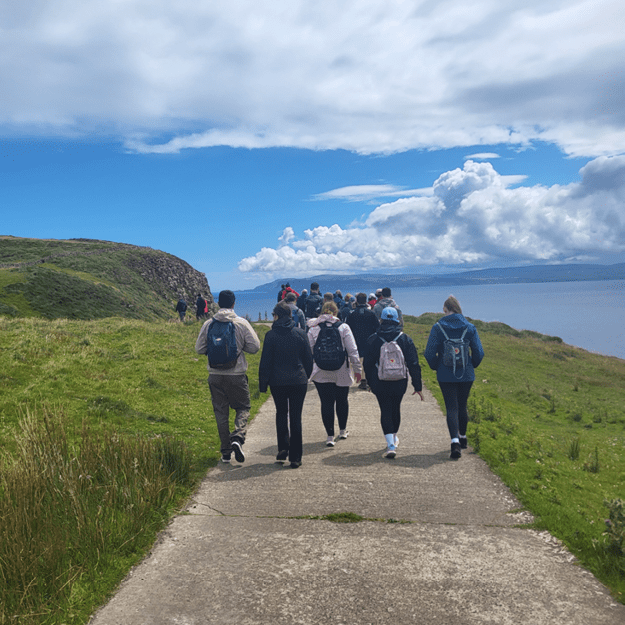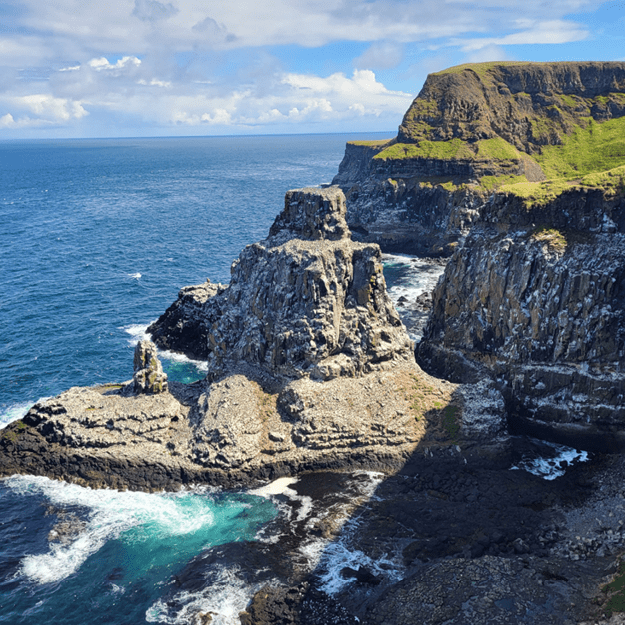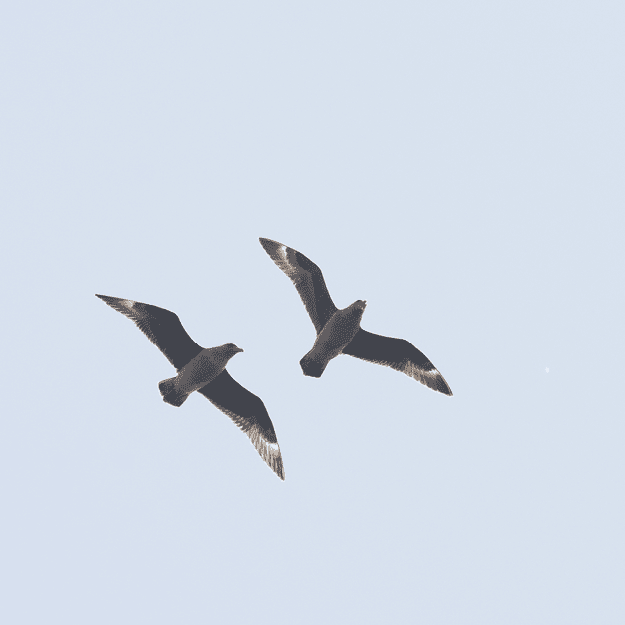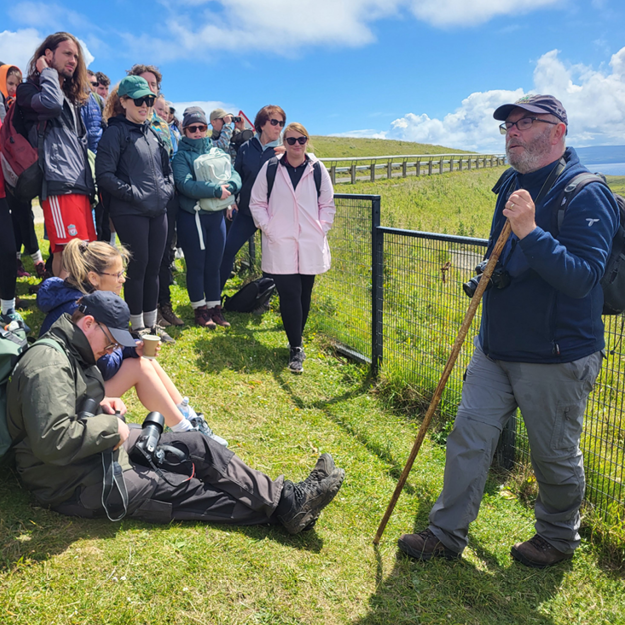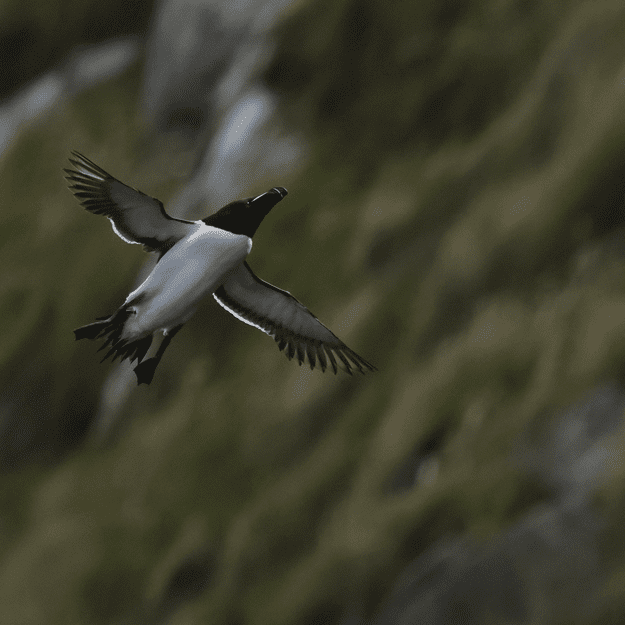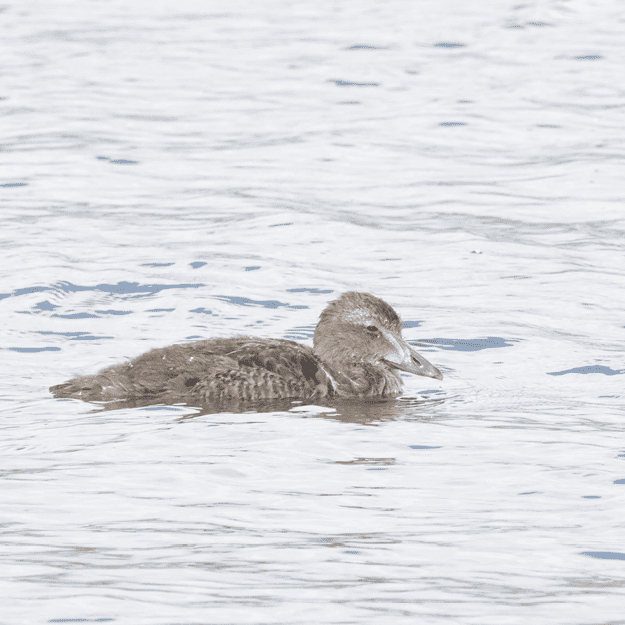This year, over 50 MKO staff and family members attended our annual island trip. Our team explored Rathlin Island and it was an excellent island to visit from an ornithological perspective. For the ornithologists who came on the trip, the Royal Society for the Protection of Birds (RSPB) Rathlin West Light Seabird Centre was a fantastic opportunity to improve their identification of some of Ireland’s breeding seabird species. The location of the viewpoint halfway down the cliff face was also fascinating for watching the birds flying back and forth from the nests from above and below. The breeding species included Fulmar, Kittiwake, Guillemot, Razorbill and Puffin, with a few Kittiwake and Razorbill chicks visible from the viewpoint. One particular highlight was seeing the pair of Great Skua pass over the cliff, prompting some mass mobbing from other species. Great Skuas are only recent colonisers in Ireland, with the first breeding recorded in 2001, and since then a handful of pairs can be found on some of the islands off Mayo and Galway. The Skuas at Rathlin are special as it’s the only location where the species have bred in Northern Ireland, and for most of the ornithologists on the island trip, it was the first time seeing the species.
There was also an opportunity for improving the identification of seabirds in flight at sea when visiting the lighthouse platform and from the ferry to the island itself, where seabirds could be seen busily flying back and forth looking for food for their hungry chicks. Other species observed at sea included Gannet, Cormorant, Shag and Manx Shearwater.
On the walking tour back to the ferry terminal from the RSPB centre, there was great excitement for seeing Buzzards on the island. While this is a species that ornithologists regularly record on their surveys across the country, the Buzzards of Rathlin Island are particularly special as they were the first birds that started recolonising the country back in the 1930s. The breeding population increased slowly from the island and onto the mainland and since then they can now be seen in every county in Ireland. One was seen soaring on the walk and there was a collective smile from the our ornithologists on the island.
A final treat on the Rathlin trip was the abundance of Black Guillemot and Eider present next to the ferry terminal in Church Bay. Both of these species are not often encountered by MKO ornithologists, and this offered a great chance to see both species up close. The Eider in particular were a highlight with ducklings of all ages present in the bay. The adult males observed were moulting into eclipse plumage, a process where post-breeding males lose their bright colours, and a dull brown female-like plumage is worn for a month which is typical of duck species. While there was some disappointment at not seeing adult males looking at their best, it provided another chance to improve identification skills. All in all, the visit to Rathlin was well worthwhile for the ornithology team.



